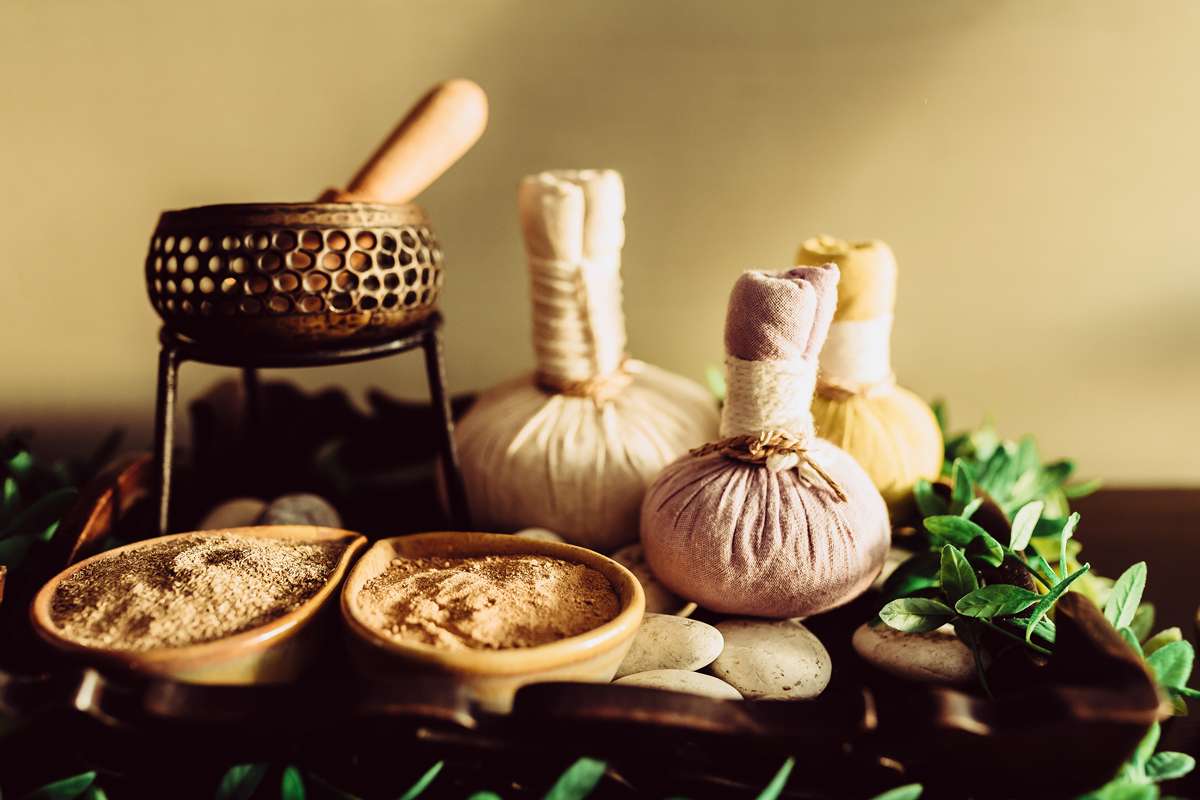- INTRODUCTION TO AYURVEDA
Definition
Ayurveda is an ancient Indian system of medicine that focuses on achieving harmony between the body, mind, and spirit to maintain health and prevent illness. The word “Ayurveda” comes from Sanskrit: “Ayur” meaning life, and “Veda” meaning knowledge or science—hence, Ayurveda means “The Science of Life.”
Unique Features
• Holistic approach to health
• Focus on prevention and wellness
• Individualized treatment plans
• Natural remedies and lifestyle modifications
• Integration of physical, mental, and spiritual health
Aim
• Swasthasya swasthya rakshanam: preserving the health of the healthy
• Aturasya vikara prashamanam: curing the disease of the ill
Concept of Health
Health (Swastha) in Ayurveda is defined as the equilibrium of the three doshas, digestive fire (Agni), body tissues (Dhatus), waste products (Malas), and a balanced state of the mind, senses, and soul.
- HISTORY OF AYURVEDA
Ayurveda is considered the world’s oldest healthcare system, with origins dating back over 5,000 years in ancient India. It evolved as part of the Vedic tradition, specifically from the Atharva Veda, one of the four Vedas. The word “Ayurveda” appears in the Rigveda and Atharvaveda, referencing healing practices and medicinal knowledge.
- BRANCHES OF AYURVEDA
1. Kaya Chikitsa (General Medicine)
2. Bala Chikitsa (Pediatrics)
3. Graha Chikitsa (Psychiatry and spiritual healing)
4. Urdhvanga Chikitsa (ENT and Ophthalmology)
5. Shalya Tantra (Surgery)
6. Damstra Chikitsa (Toxicology)
7. Jara Chikitsa (Geriatrics and rejuvenation)
8. Vrisha Chikitsa (Aphrodisiac therapy)
- BASIC PRINCIPLES OF AYURVEDA
Theory of Creation
According to Ayurveda, the universe and human beings are created from the Pancha Mahabhutas—five great elements: Akasha (ether), Vayu (air), Agni (fire), Jala (water), and Prithvi (earth).
- PANCHA MAHABHUTA CONCEPT
These five elements form the foundation of all matter in the universe. Every structure and function of the human body can be understood through the combination and dominance of these elements.
• Akasha (ether)
• Vayu (air)
• Agni (fire)
• Jala (water)
• Prithvi (earth)
- TRIDOSHA CONCEPT
The five elements combine to form three biological energies or doshas:
• Vata (Air + Ether) – Movement, communication
• Pitta (Fire + Water) – Digestion, metabolism
• Kapha (Water + Earth) – Structure, lubrication
Balance among these doshas maintains health, while imbalance leads to disease.
- CONCEPT OF BODY – MIND – SOUL
Ayurveda sees health as a balanced state of body (Sharira), mind (Manas), and soul (Atma). Spiritual well-being is integral, making Ayurveda both a physical and spiritual discipline.
- CONCEPT OF SAPTA DHATU (SEVEN BODY TISSUES)
1. Rasa (Plasma)
2. Rakta (Blood)
3. Mamsa (Muscle)
4. Meda (Fat)
5. Asthi (Bone)
6. Majja (Bone marrow)
7. Shukra/Artava (Reproductive tissue)
These nourish and support the structure and functions of the body.
- CONCEPT OF MALA (WASTE PRODUCTS)
Three primary waste products are:
• Mutra (Urine)
• Purisha (Feces)
• Sweda (Sweat)
Elimination of these is essential for maintaining health.
- CONCEPT OF SROTAS (BODY CHANNELS)
Srotas are channels or pathways that transport nutrients, waste, and energies throughout the body. Any blockage or dysfunction in the srotas leads to disease.
- CONCEPT OF AGNI (DIGESTIVE FIRE)
Agni governs digestion, absorption, and assimilation. There are 13 types of Agni, with Jatharagni being the primary digestive fire in the stomach.
- CONCEPT OF KOSHTA (ALIMENTARY TRACT)
Koshta refers to the alimentary tract and its functional nature—can be:
• Mridu (Soft) – dominant in Kapha
•Madhya (Medium) – dominant in Pitta
•Krura (Hard) – dominant in Vata
- CONCEPT OF PRAKRUTI (BODY CONSTITUTION)
Prakruti is the inherent physical and psychological constitution of an individual, determined at conception by the dominant doshas. It guides one’s tendencies toward health or disease and influences diet and lifestyle recommendations.
Types of Prakruti
- Vata Prakruti
- Dominant Dosha
•Kapha (Water + Earth)
- Characteristics:
•Thin body, dry skin, variable appetite
•Quick to grasp but forgets easily
•Prone to anxiety, constipation, and cold sensitivity
•Energetic and creative, but easily fatigued
- Pitta Prakruti
- Dominant Dosha
•Pitta (Fire + Water)
- Characteristics
•Medium build, warm body, oily skin
•Sharp intellect, good digestion
•Prone to anger, ulcers, skin rashes
•Ambitious, focused, and goal-oriented
- Kapha Prakruti
- Dominant Dosha
•Kapha (Water + Earth)
- Characteristics
•Heavy build, smooth skin, steady energy
•Calm, compassionate, slow learner but good memory
•Prone to obesity, allergies, respiratory issues
•Loyal and emotionally stable
- Vata-Pitta Prakruti (Dual Type)
- Combination
•Vata and Pitta
- Characteristics
•Mixture of lightness and intensity, with alternating features of both doshas.
- Pitta-Kapha Prakruti (Dual Type)
- Combination
•Pitta and Kapha
- Characteristics
•Medium build, oily skin, balanced stamina with risk of inflammation and congestion.
- Vata-Kapha Prakruti (Dual Type)
- Combination
•Vata and Kapha
- Characteristics
• Mixed traits such as dryness from Vata and heaviness from Kapha; prone to sluggish digestion and variable energy.
- Sama Prakruti (Tridoshic or Balanced Type)
- Balanced Doshas
•Vata, Pitta, and Kapha in equal proportions
- Characteristics
•Balanced physical and mental traits
•Excellent immunity and adaptability
•Rare, considered the ideal constitution
Each Prakruti type influences a person’s diet, lifestyle, susceptibility to disease, and response to treatment. Understanding your Prakruti helps in personalized wellness planning in Ayurveda.
